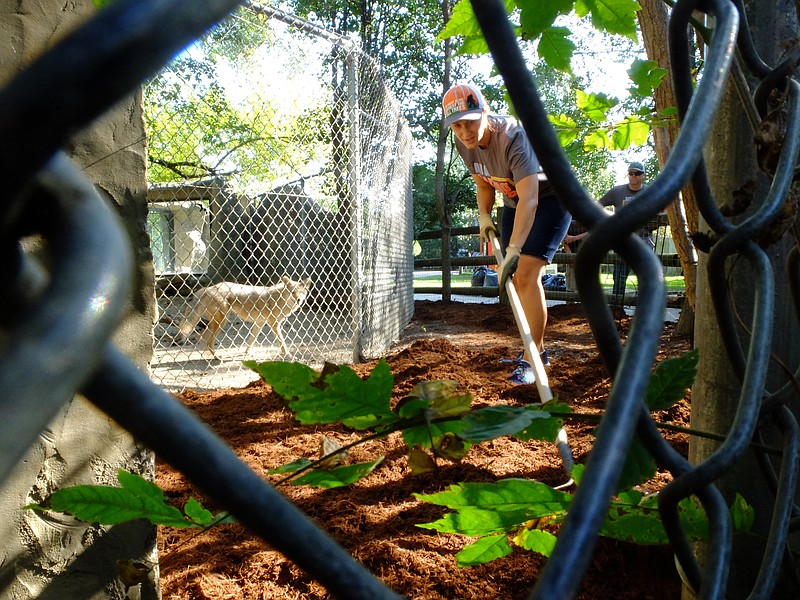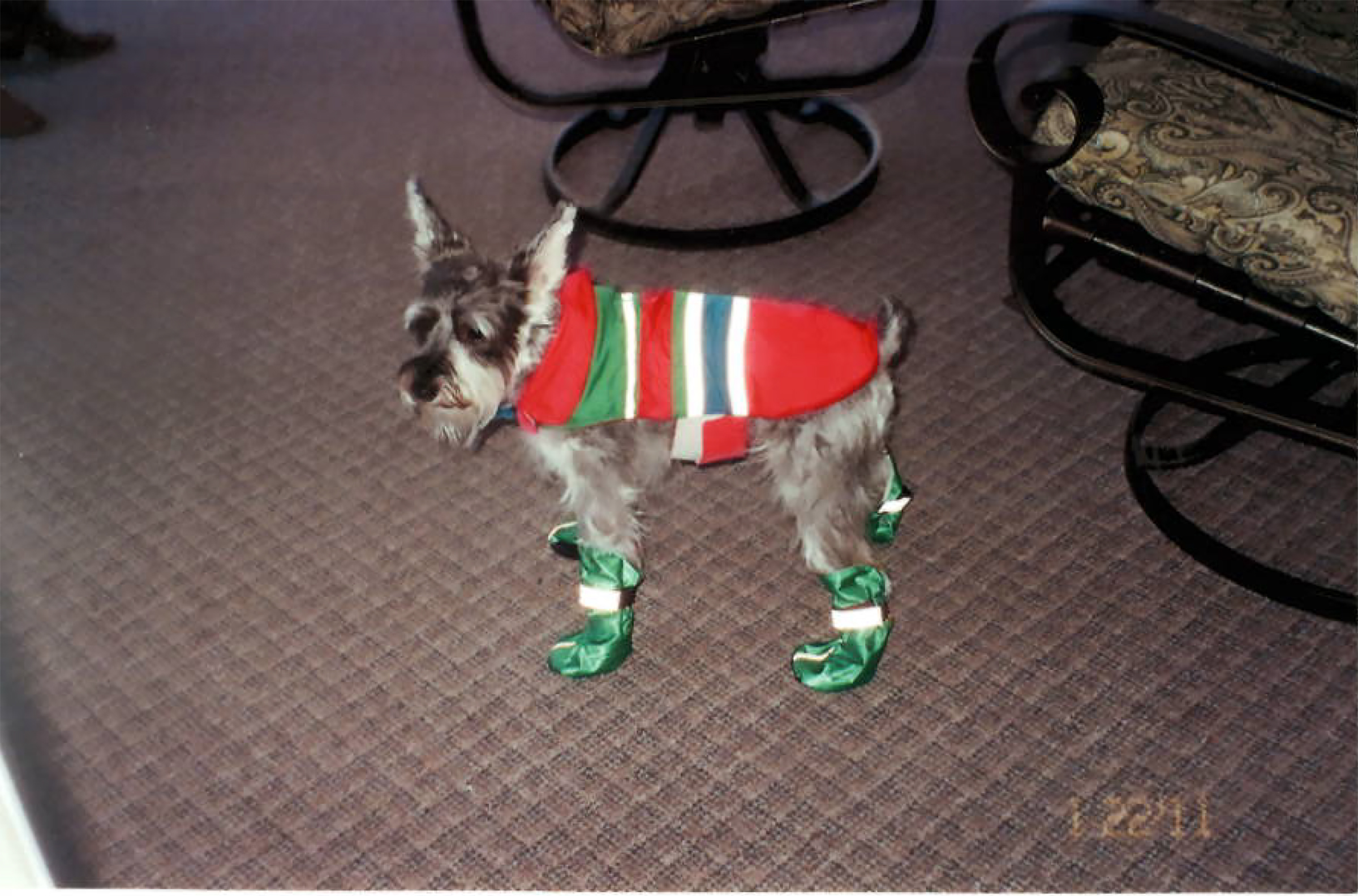As Virgil Marler headed toward the driveway to pick up the newspaper on an early April morning, Hansel, the 8-year-old German schnauzer that lives with him and Michalene Whitaker, came darting through the open door.
"He likes to go out front," Whitaker said. "It was kind of drizzly, so he had his little raincoat on that has Velcro."
Whitaker credits the raincoat with saving Hansel's life that dreary spring morning.
Coyotes that were encroaching on the neighborhood in the heart of East Brainerd attacked Hansel, grabbing the small dog by the neck. However, the raincoat came unstrapped, allowing the dog to break free.
"That must have confused them," Whitaker said. The coyotes fled with the raincoat, dropping it in a nearby property, but left the dog behind. Hansel's injuries required stitches, but he has since recovered.
Marler and Whitaker aren't the only Chattanoogans noticing an uptick in coyotes. Residents across Tennessee have reported more coyote sightings they believe have led to smaller populations of other small animals. Residents in nearby neighborhoods have posted their encounters and suspicions online, and one resident, Jerry Peyton, started an email chain with reporters, neighbors and state officials.
The Tennessee Wildlife Resources Agency has confirmed the residents' suspicions. The agency does not keep specific data on coyote sightings and attacks, but told the Times Free Press via email that officials can confidently say there's been a population increase in the state.
"Coyotes have steadily moved into Tennessee over the past several decades and their numbers continue to grow each year," TWRA Executive Director Ed Carter wrote. "We believe they have been detrimental to several species of ground-nesting birds as well as rabbits and similar smaller mammals."
Agency officials see this as a community issue that can best be dealt with by increased awareness and a coordinated effort by the community, said TWRA wildlife program manager Kirk Miles. The most effective way to control coyotes is through snares and traps, Carter wrote. There's also a year-round hunting season with no limit on the animal.
However, shooting the animals or setting traps in residential neighborhoods is often illegal and dangerous. Miles suggested that communities look for ways to alter habitat. If they don't - and exterminate existing coyotes - more coyotes will quickly move in and claim the territory.
Agency officials have several recommendations to help residents protect their pets and property. One suggestion is to haze the animals.
"Coyotes are being seen and not fearful of humans because they have nothing to be fearful of," according to a TWRA recommendation. "The goal isn't to hurt wildlife but to scare it."
The agency recommends people scare the animal by throwing items toward it, yelling, spraying water from a garden hose or creating loud noises.
They also recommend people keep their properties clear from overgrown areas, abandoned structures, and areas with brush piles; rid properties of attractants such as trash, bird feeders and uneaten pet food; and keep pets on leashes.
Contact staff writer Mark Pace at mpace@timesfreepress.com or 423-757-6659. Follow him on Twitter @themarkpace and on Facebook at ChattanoogaOutdoorsTFP.

